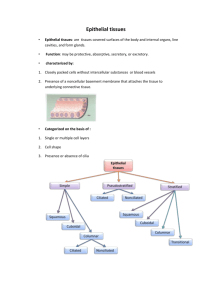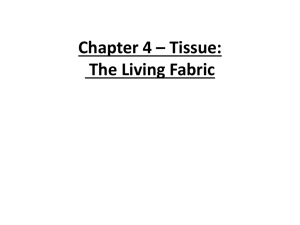Tissue: The Living Fabric: Part A
advertisement
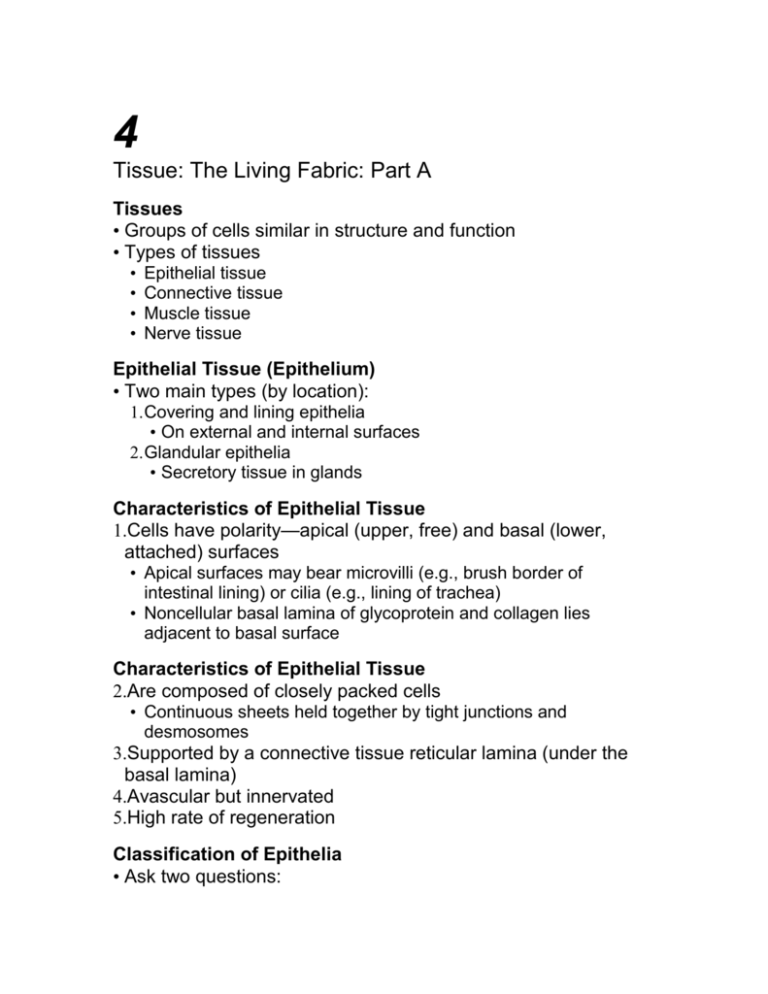
4 Tissue: The Living Fabric: Part A Tissues • Groups of cells similar in structure and function • Types of tissues • • • • Epithelial tissue Connective tissue Muscle tissue Nerve tissue Epithelial Tissue (Epithelium) • Two main types (by location): 1. Covering and lining epithelia • On external and internal surfaces 2. Glandular epithelia • Secretory tissue in glands Characteristics of Epithelial Tissue 1.Cells have polarity—apical (upper, free) and basal (lower, attached) surfaces • Apical surfaces may bear microvilli (e.g., brush border of intestinal lining) or cilia (e.g., lining of trachea) • Noncellular basal lamina of glycoprotein and collagen lies adjacent to basal surface Characteristics of Epithelial Tissue 2.Are composed of closely packed cells • Continuous sheets held together by tight junctions and desmosomes 3.Supported by a connective tissue reticular lamina (under the basal lamina) 4.Avascular but innervated 5.High rate of regeneration Classification of Epithelia • Ask two questions: 1. How many layers? 1 = simple epithelium >1 = stratified epithelium Classification of Epithelia 2. What type of cell? • Squamous • Cuboidal • Columnar • (If stratified, name according to apical layer of cells) Overview of Epithelial Tissues • For each of the following types of epithelia, note: • Description • Function • Location Epithelia: Simple Squamous • Two other locations • Endothelium • The lining of lymphatic vessels, blood vessels, and heart • Mesothelium • The epithelium of serous membranes in the ventral body cavity Epithelia: Stratified Cuboidal • Quite rare in body • Found in some sweat and mammary glands • Typically two cell layers thick Epithelia: Stratified Columnar • Limited distribution in body • Small amounts in pharynx, male urethra, and lining some glandular ducts • Also occurs at transition areas between two other types of epithelia Glandular Epithelia • A gland is one or more cells that makes and secretes an aqueous fluid • Classified by: • Site of product release—endocrine or exocrine • Relative number of cells forming the gland—unicellular (e.g., goblet cells) or multicellular Endocrine Glands • Ductless glands • Secrete hormones that travel through lymph or blood to target organs Exocrine Glands • More numerous than endocrine glands • Secrete products into ducts • Secretions released onto body surfaces (skin) or into body cavities • Examples include mucous, sweat, oil, and salivary glands Unicellular Exocrine Glands • The only important unicellular gland is the goblet cell Multicellular Exocrine Glands • Multicellular exocrine glands are composed of a duct and a secretory unit • Classified according to: • Duct type (simple or compound) • Structure of their secretory units (tubular, alveolar, or tubuloalveolar) Modes of Secretion • Merocrine • Products are secreted by exocytosis (e.g., pancreas, sweat and salivary glands) • Holocrine • Products are secreted by rupture of gland cells (e.g., sebaceous glands)

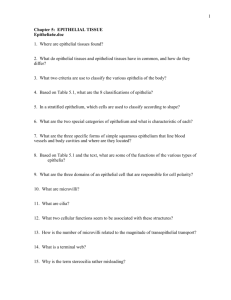
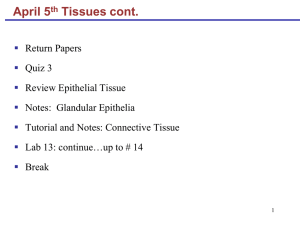
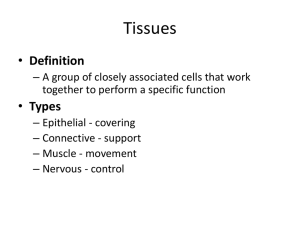
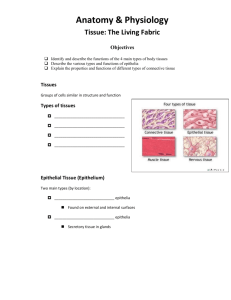

![Histology [Compatibility Mode]](http://s3.studylib.net/store/data/008258852_1-35e3f6f16c05b309b9446a8c29177d53-300x300.png)

